Digs & Discoveries
Polychrome Patchwork
By BENJAMIN LEONARD
Friday, April 10, 2020
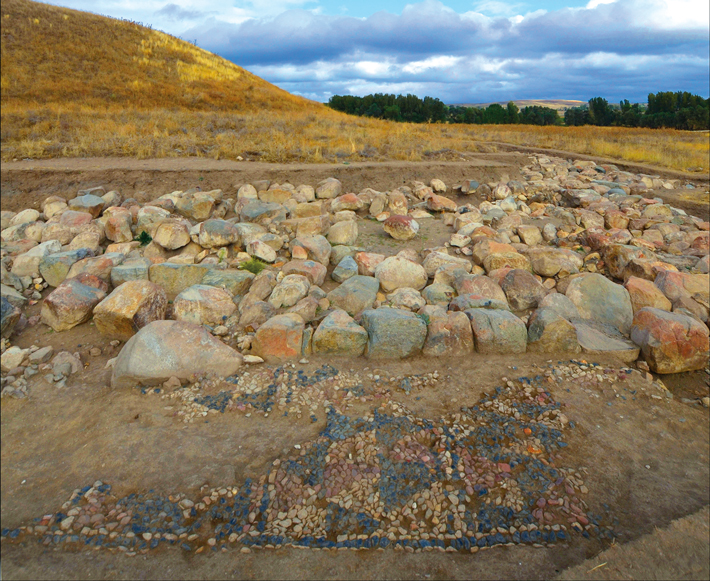 An Italian-Turkish team has unearthed the world’s oldest-known polychrome mosaic floor at Usakli Hoyuk, a Hittite settlement in central Turkey. The partially preserved mosaic measures 23 feet by 10 feet and once adorned an open courtyard belonging to a building that archaeologists believe was a second-millennium B.C. temple. The mosaic, which was set into a beaten-earth surface, consists of more than 3,000 multicolored stones arranged in rectangular frames, each with three rows of alternating white, red, and blue-black triangles. Stone pavements served a practical function in Hittite architecture. “It’s the way Hittites built their houses and public buildings, probably as a solution to prevent problems connected with rain,” says archaeologist Anacleto D’Agostino of the University of Pisa. D’Agostino adds that these colored geometric patterns have not been found at other Hittite sites, and are thought to indicate the courtyard’s association with performance of some kind of ritual.
An Italian-Turkish team has unearthed the world’s oldest-known polychrome mosaic floor at Usakli Hoyuk, a Hittite settlement in central Turkey. The partially preserved mosaic measures 23 feet by 10 feet and once adorned an open courtyard belonging to a building that archaeologists believe was a second-millennium B.C. temple. The mosaic, which was set into a beaten-earth surface, consists of more than 3,000 multicolored stones arranged in rectangular frames, each with three rows of alternating white, red, and blue-black triangles. Stone pavements served a practical function in Hittite architecture. “It’s the way Hittites built their houses and public buildings, probably as a solution to prevent problems connected with rain,” says archaeologist Anacleto D’Agostino of the University of Pisa. D’Agostino adds that these colored geometric patterns have not been found at other Hittite sites, and are thought to indicate the courtyard’s association with performance of some kind of ritual.
At Press Time
By MARLEY BROWN
Friday, April 10, 2020
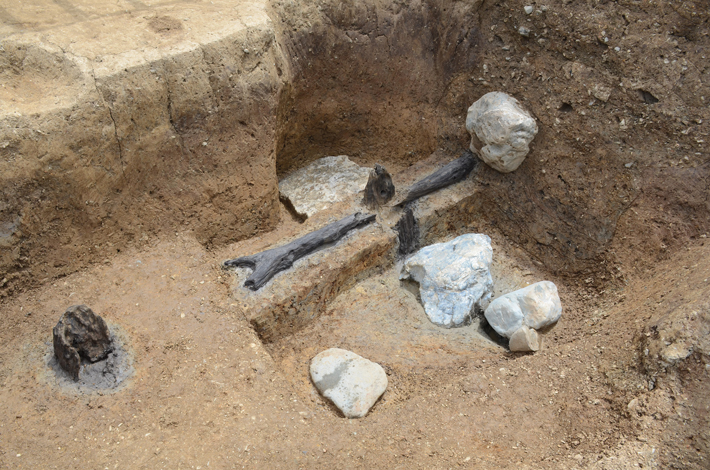
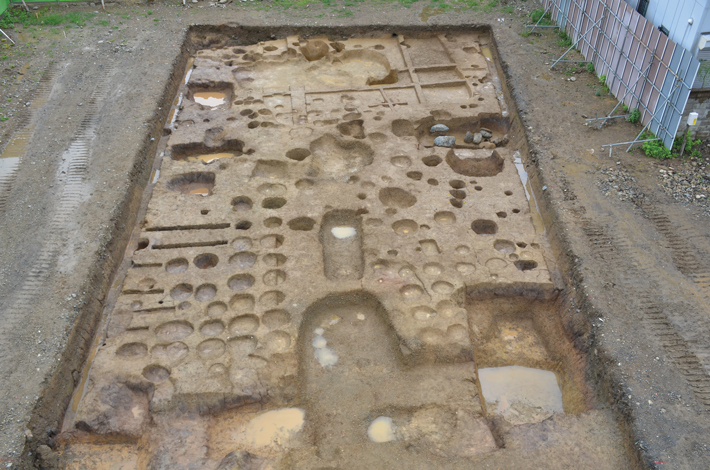 The oldest known remains of a sake brewery in Japan have been unearthed by archaeologists in Kyoto. Discovered ahead of construction on the former grounds of the Zen Buddhist Tenryuji Temple in the city’s Saga district, the brewery is believed to have been in use during the period leading up to the Onin War (ca. 1467–1477), a power struggle between the ruling Muromachi Shogunate and an alliance of rebellious feudal lords that ravaged Kyoto. The brewery remains include a cellar, storage jars, and a heavy wooden press, in which cloth bags holding unrefined sake were squeezed to produce the finished product. “The facility is estimated to be approximately three hundred years older than one built in 1674 in Itami City, which was considered the oldest until now,” says site director Masato Murao of the cultural heritage excavation and research firm Kokusai Bunkazai Co. Ltd. According to Murao, 17 sake breweries operating in the Saga district were recorded in 1425. He adds it is likely that monks and other members of the Tenryuji Temple made significant—and untaxed—profits brewing sake at the time.
The oldest known remains of a sake brewery in Japan have been unearthed by archaeologists in Kyoto. Discovered ahead of construction on the former grounds of the Zen Buddhist Tenryuji Temple in the city’s Saga district, the brewery is believed to have been in use during the period leading up to the Onin War (ca. 1467–1477), a power struggle between the ruling Muromachi Shogunate and an alliance of rebellious feudal lords that ravaged Kyoto. The brewery remains include a cellar, storage jars, and a heavy wooden press, in which cloth bags holding unrefined sake were squeezed to produce the finished product. “The facility is estimated to be approximately three hundred years older than one built in 1674 in Itami City, which was considered the oldest until now,” says site director Masato Murao of the cultural heritage excavation and research firm Kokusai Bunkazai Co. Ltd. According to Murao, 17 sake breweries operating in the Saga district were recorded in 1425. He adds it is likely that monks and other members of the Tenryuji Temple made significant—and untaxed—profits brewing sake at the time.
If These Walls Could Talk
By MARLEY BROWN
Friday, April 10, 2020
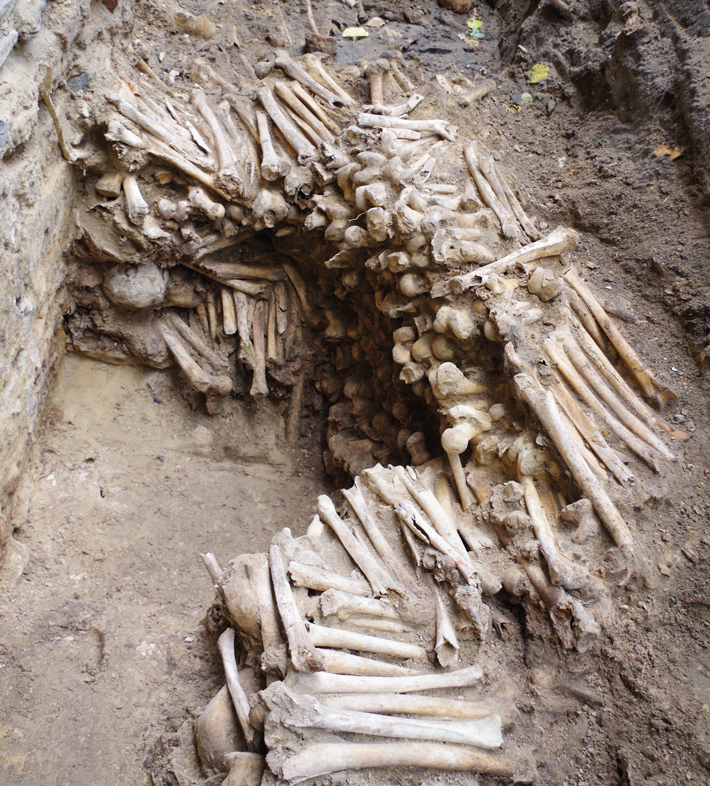 Nine walls made up entirely of human bones have been uncovered by archaeologists at the site of the former Church of Saint John, now Saint Bavo’s Cathedral, in Ghent, Belgium. Most of the remains have been radiocarbon dated to the second half of the fifteenth century, but the bones were likely not used for construction projects until sometime in the seventeenth or eighteenth century, when a section of the church cemetery was cleared to make room for new burials. “We have more than a thousand skeletons in all from in and around the church site,” says project leader Janiek De Gryse of Ruben Willaert Restoration & Archeology/Decoration, “but these walls tell us something about the practice of clearing churchyards.” She adds that future researchers will investigate whether the layering of bones was undertaken purely due to space limitations, or whether the walls may have held religious or spiritual significance.
Nine walls made up entirely of human bones have been uncovered by archaeologists at the site of the former Church of Saint John, now Saint Bavo’s Cathedral, in Ghent, Belgium. Most of the remains have been radiocarbon dated to the second half of the fifteenth century, but the bones were likely not used for construction projects until sometime in the seventeenth or eighteenth century, when a section of the church cemetery was cleared to make room for new burials. “We have more than a thousand skeletons in all from in and around the church site,” says project leader Janiek De Gryse of Ruben Willaert Restoration & Archeology/Decoration, “but these walls tell us something about the practice of clearing churchyards.” She adds that future researchers will investigate whether the layering of bones was undertaken purely due to space limitations, or whether the walls may have held religious or spiritual significance.
Warrior Stone
By BENJAMIN LEONARD
Friday, April 10, 2020
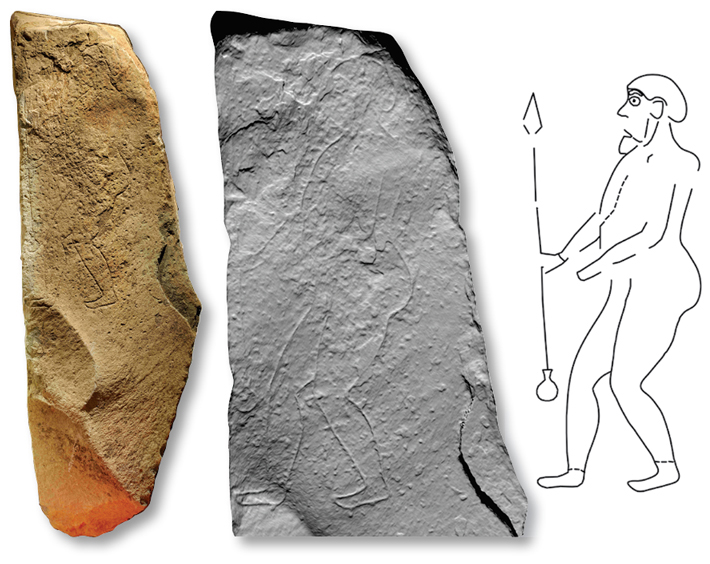 A six-foot-tall monolith called the Tulloch Stone offers new evidence of the beliefs of the elusive Picts of ancient Britain, who resisted the Romans and later formed powerful independent Scottish kingdoms. Discovered by construction workers during a road project in central Scotland, the stone features a carving thought to date to the fifth or sixth century A.D. of a possibly unclothed man carrying a spear with a doorknob-shaped end. Similar figures, each holding an identical spear, are carved on two other Pictish stones that were found in cemeteries in Scotland dating to roughly the same period. Archaeologist Gordon Noble of the University of Aberdeen says that, rather than representing deceased individuals, all three carvings probably depict a pagan warrior god. “By the post-Roman period, this was very much a warrior-oriented society,” Noble says. “These images seem to represent a distinctive regional manifestation of a warrior ideology.”
A six-foot-tall monolith called the Tulloch Stone offers new evidence of the beliefs of the elusive Picts of ancient Britain, who resisted the Romans and later formed powerful independent Scottish kingdoms. Discovered by construction workers during a road project in central Scotland, the stone features a carving thought to date to the fifth or sixth century A.D. of a possibly unclothed man carrying a spear with a doorknob-shaped end. Similar figures, each holding an identical spear, are carved on two other Pictish stones that were found in cemeteries in Scotland dating to roughly the same period. Archaeologist Gordon Noble of the University of Aberdeen says that, rather than representing deceased individuals, all three carvings probably depict a pagan warrior god. “By the post-Roman period, this was very much a warrior-oriented society,” Noble says. “These images seem to represent a distinctive regional manifestation of a warrior ideology.”
The Cursing Well
By BENJAMIN LEONARD
Friday, April 10, 2020
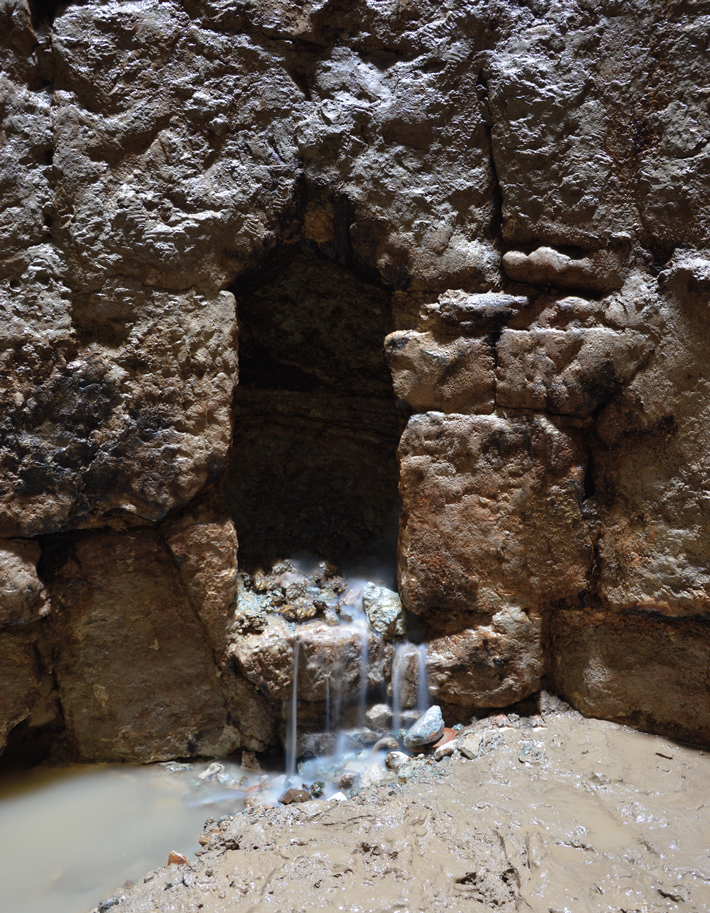 Thirty lead tablets recovered from the bottom of a public well at the edge of the Kerameikos necropolis in Athens have been found to record curses cast by Athenians against their rivals some 2,300 years ago. Several of the tablets were folded and pierced with nails, while others were fashioned in the shape of livers or coffins. A particularly scathing malediction condemns an allegedly promiscuous newlywed named Glykera and her vulva.
Thirty lead tablets recovered from the bottom of a public well at the edge of the Kerameikos necropolis in Athens have been found to record curses cast by Athenians against their rivals some 2,300 years ago. Several of the tablets were folded and pierced with nails, while others were fashioned in the shape of livers or coffins. A particularly scathing malediction condemns an allegedly promiscuous newlywed named Glykera and her vulva.
Until the late fourth century B.C., such Athenian curse tablets were usually deposited in tombs. At that point, according to the first-century B.C. Roman author and orator Cicero, the statesman Demetrius of Phaleron instituted a new law restricting elaborate burials and funeral practices. To evade detection by the officers employed to enforce this law, crafty sorcerers seem to have turned to wells as a more secretive venue for their magic rituals. The Greeks believed that water, and in particular groundwater, was a conduit to the streams of the underworld, explains archaeologist Jutta Stroszeck of the German Archaeological Institute in Athens. “Water nymphs protected the water,” she says, “and were thus thought to be capable of directing the curses to the gods of the underworld.”
TRANSLATION OF THE GLYKERA CURSE TABLET:
We curse Glykera the wife of Dion, to the gods of the underworld, so she be punished and her wedding be unfulfilled. I bind down Glykera, the wife of Dion, to Hermes Eriounios of the underworld, her vulva, her debauchery, her vice and everything of the sinful Glykera

Advertisement
Advertisement
IN THIS ISSUE
Digs & Discoveries
The Parthenon by Any Other Name?
Off the Grid
Guardian Feline
The Cursing Well
If These Walls Could Talk
Warrior Stone
At Press Time
Polychrome Patchwork
Scaredy Cats
Arms and the Women
Birds of a Feather
Viking Knights, Polish Days
Z Marks the Spot
Around the World
Neanderthal clam divers, bananas in Vanuatu, the Maya Great Road, and a secret door in Parliament
Artifact
An emblem of endurance
Advertisement

Recent Issues
-
 May/June 2024
May/June 2024
-
 March/April 2024
March/April 2024
-
 January/February 2024
January/February 2024
-
 November/December 2023
November/December 2023
-
 September/October 2023
September/October 2023
-
 July/August 2023
July/August 2023
-
 May/June 2023
May/June 2023
-
 March/April 2023
March/April 2023
-
 January/February 2023
January/February 2023
-
 November/December 2022
November/December 2022
-
 September/October 2022
September/October 2022
-
 July/August 2022
July/August 2022
-
 May/June 2022
May/June 2022
-
 March/April 2022
March/April 2022
-
 January/February 2022
January/February 2022
-
 November/December 2021
November/December 2021
-
 September/October 2021
September/October 2021
-
 July/August 2021
July/August 2021
-
 May/June 2021
May/June 2021
-
 March/April 2021
March/April 2021
-
 January/February 2021
January/February 2021
-
 November/December 2020
November/December 2020
-
 September/October 2020
September/October 2020
-
 July/August 2020
July/August 2020
-
 May/June 2020
May/June 2020
-
 March/April 2020
March/April 2020
-
 January/February 2020
January/February 2020
-
 November/December 2019
November/December 2019
-
 September/October 2019
September/October 2019
-
 July/August 2019
July/August 2019
-
 May/June 2019
May/June 2019
-
 March/April 2019
March/April 2019
-
 January/February 2019
January/February 2019
-
 November/December 2018
November/December 2018
-
 September/October 2018
September/October 2018
-
 July/August 2018
July/August 2018
-
 May/June 2018
May/June 2018
-
 March/April 2018
March/April 2018
-
 January/February 2018
January/February 2018
-
 November/December 2017
November/December 2017
-
 September/October 2017
September/October 2017
-
 July/August 2017
July/August 2017
-
 May/June 2017
May/June 2017
-
 March/April 2017
March/April 2017
-
 January/February 2017
January/February 2017
-
 November/December 2016
November/December 2016
-
 September/October 2016
September/October 2016
-
 July/August 2016
July/August 2016
-
 May/June 2016
May/June 2016
-
 March/April 2016
March/April 2016
-
 January/February 2016
January/February 2016
-
 November/December 2015
November/December 2015
-
 September/October 2015
September/October 2015
-
 July/August 2015
July/August 2015
-
 May/June 2015
May/June 2015
-
 March/April 2015
March/April 2015
-
 January/February 2015
January/February 2015
-
 November/December 2014
November/December 2014
-
 September/October 2014
September/October 2014
-
 July/August 2014
July/August 2014
-
 May/June 2014
May/June 2014
-
 March/April 2014
March/April 2014
-
 January/February 2014
January/February 2014
-
 November/December 2013
November/December 2013
-
 September/October 2013
September/October 2013
-
 July/August 2013
July/August 2013
-
 May/June 2013
May/June 2013
-
 March/April 2013
March/April 2013
-
 January/February 2013
January/February 2013
-
 November/December 2012
November/December 2012
-
 September/October 2012
September/October 2012
-
 July/August 2012
July/August 2012
-
 May/June 2012
May/June 2012
-
 March/April 2012
March/April 2012
-
 January/February 2012
January/February 2012
-
 November/December 2011
November/December 2011
-
 September/October 2011
September/October 2011
-
 July/August 2011
July/August 2011
-
 May/June 2011
May/June 2011
-
 March/April 2011
March/April 2011
-
 January/February 2011
January/February 2011
Advertisement






